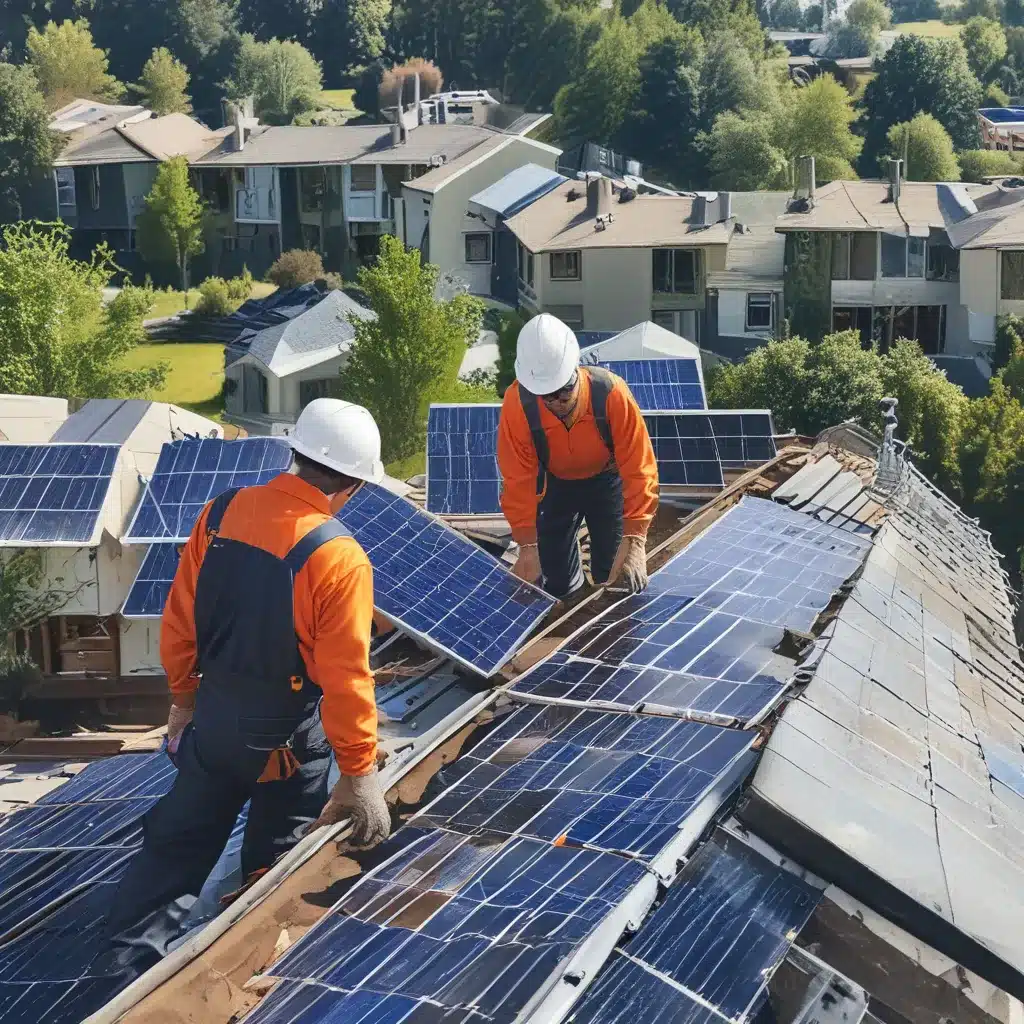
The Bureaucratic Boogie: Navigating Solar Permits and Inspections
Ah, the joys of owning a solar energy system – clean, renewable power at your fingertips! But before you can start harnessing the sun’s rays, there’s a little bureaucratic dance you’ll need to master. That’s right, solar permits and inspections – the necessary evils that ensure your system is up to snuff and won’t accidentally burn your house down.
But fear not, my sun-powered friends! In this comprehensive guide, I’ll walk you through the ins and outs of the permitting and inspection process, so you can navigate it with all the grace and confidence of a seasoned solar salsa dancer.
The Permit Parade: Navigating the Red Tape
Let’s start with the permits. Yep, that’s right – you can’t just slap some solar panels on your roof and call it a day. Your local government expects you to jump through a few hoops first. But don’t worry, your solar installer will typically handle the logistics of obtaining the necessary permits as part of their service.
According to EnergySage, the typical permits you’ll need to obtain include:
- Electrical Permit: To ensure your solar installation meets state-mandated electrical codes.
- Structural/Building Permit: To verify that your roof can support the weight of the solar panels and associated equipment.
- Solar PV Permit: A dedicated permit specifically for your solar photovoltaic (PV) system.
The specific permits required will vary depending on your location, as well as the size and type of your solar energy system. For example, if you live in a historical district or are part of a homeowners association (HOA), you may need additional approvals.
And let’s not forget about those pesky zoning laws! Depending on your area, there may be different regulations for ground-mounted solar installations versus rooftop systems. The permit process for a large commercial solar farm is also typically more involved than a residential rooftop setup.
So, how much will these permits set you back? Well, the costs can range quite a bit, but some states have regulations in place to cap the fees. For example, Colorado limits residential solar permitting costs to $500, while California caps them at $450. Of course, the actual fees can vary widely depending on your local government, so be sure to check with them directly.
The Inspection Intrigue: Ensuring Safety and Compliance
Alright, now that you’ve got your permits in hand, it’s time for the next step in the solar dance: the inspections. Just like the permits, these are a necessary part of the process to ensure your system is installed correctly and meets all the necessary safety standards.
According to the U.S. Department of Energy, there are typically two solar inspections that need to happen:
- Pre-Installation Inspection: An engineer will come to your property to make sure your electrical system can handle the addition of solar and that your roof can support the weight of the panels.
- Post-Installation Inspection: Once your solar system is up and running, a representative from your local government’s building department will conduct a final inspection to ensure the installation meets all the necessary building codes and safety regulations.
And the fun doesn’t stop there! Your utility company will also likely send someone out to perform their own inspection before giving you the green light to start generating power. This is to make sure your system is interconnected to the grid properly and everything is up to their standards.
Now, you might be wondering, “How much is this inspection circus going to cost me?” Well, the good news is that for most residential solar installations, the total permitting and inspection fees will typically be a few hundred dollars or less. Some states even have caps on what governments can charge, so you might not even notice these costs when you’re paying for your overall solar installation.
The Streamlining Showdown: Reducing Solar Soft Costs
Now, I know what you’re thinking: “All this red tape and bureaucracy is enough to make me want to give up on solar altogether!” But fear not, my friends, help is on the way.
The solar industry is constantly working to streamline the permitting and inspection processes, with the goal of reducing the overall “soft costs” associated with going solar. These soft costs, which include things like permitting, inspections, and customer acquisition, can account for up to two-thirds of the total price tag for a residential solar system.
According to the U.S. Department of Energy, projects funded by the Solar Energy Technologies Office (SETO) are tackling these solar market barriers by developing solutions to decrease the administrative burdens of installing solar, such as outdated building codes and backlogged permit applications.
One initiative, called Solar Automated Permit Processing (SolarApp), is working to streamline the permitting process through greater use of online systems and automated approvals for smaller solar projects. If successful, the Solar Foundation and Solar Energy Industries Association predict this program could save $2.2 billion in taxpayer money over five years.
So, while the permitting and inspection dance may seem daunting at first, take heart in the fact that the industry is actively working to make the process smoother and more efficient. And remember, your solar installer will be there to guide you through every step of the way.
Now, let’s get back to the fun part – harnessing the power of the sun! Visit Solar A Systems Inc to start your journey towards energy independence and a greener future.


